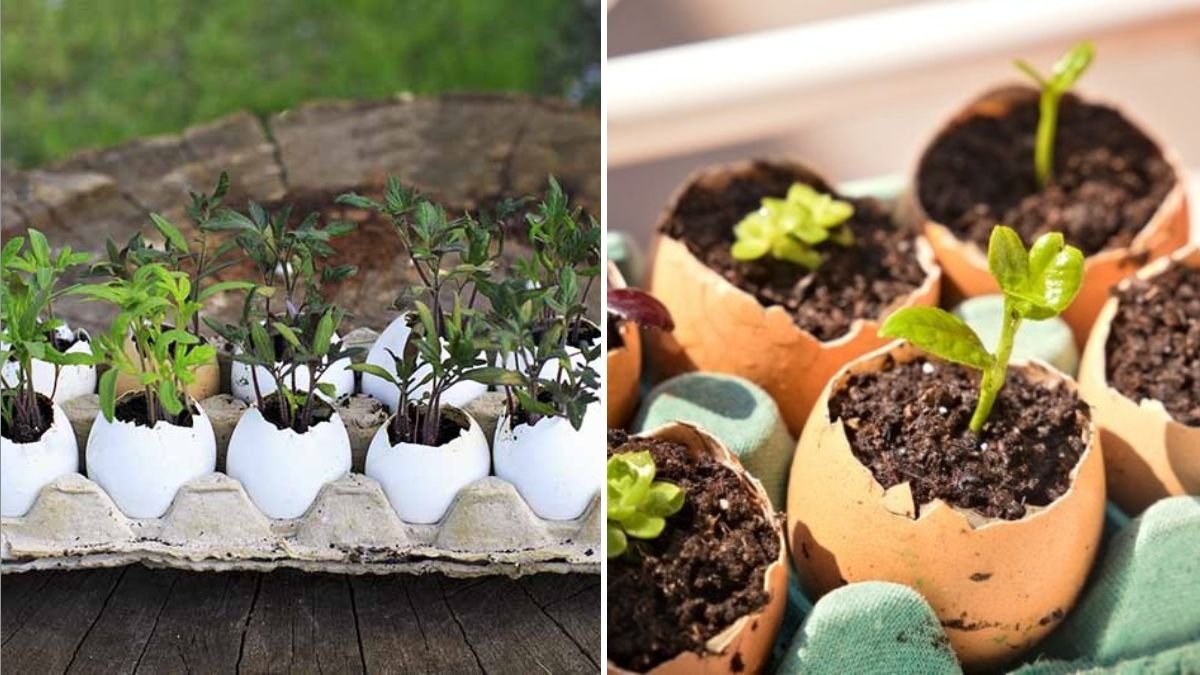For many gardeners, the kitchen is as valuable a source of garden amendments as the nursery. One of the simplest—and most overlooked—free resources is something you probably throw away every day: eggshells. Packed with calcium carbonate and trace minerals, eggshells improve soil, protect plants, and even deter pests when used correctly.
But there are safe and unsafe ways to use them. Simply tossing raw shells onto the soil isn’t enough—they can attract pests, decompose too slowly, or spread bacteria. Instead, with a little preparation, eggshells can become a powerful and sustainable tool in your garden.
Here are eight safe and effective ways to use eggshells in your garden—plus tips to maximize their benefits.
1. Soil Amendment for Calcium
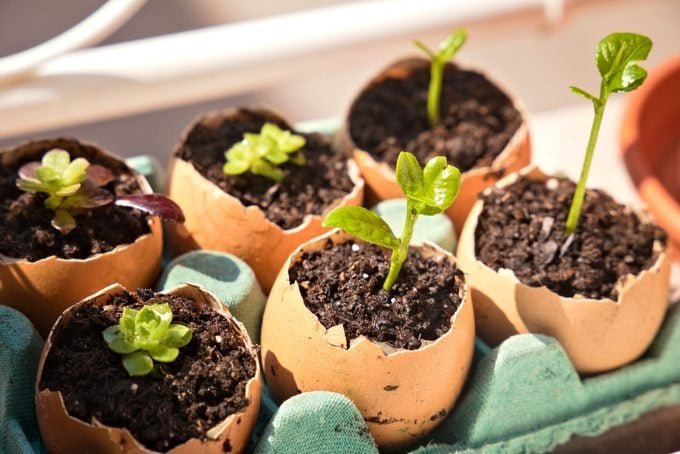
Eggshells are more than 90% calcium carbonate, making them a natural substitute for lime in the garden. Calcium strengthens cell walls, prevents diseases like blossom-end rot in tomatoes and peppers, and encourages healthier growth.
How to use:
- Rinse shells thoroughly to remove any egg residue.
- Allow them to dry, then crush into small pieces or grind into a powder with a blender or mortar and pestle.
- Mix into garden soil before planting or sprinkle around the base of established plants.
Safety tip: Always dry and crush shells before use. Whole shells decompose too slowly to provide nutrients in the short term.
2. Compost Booster
Adding eggshells to compost enriches it with calcium and trace minerals like magnesium and potassium. These nutrients support balanced plant growth once the compost is returned to the soil.
How to use:
- Rinse shells to prevent odors that attract rodents.
- Crush them lightly before adding to your compost pile for quicker breakdown.
- Mix evenly with other kitchen scraps and yard waste.
Safety tip: Avoid tossing whole, raw shells into compost—they may not break down quickly and can harbor bacteria.
3. Natural Pest Deterrent
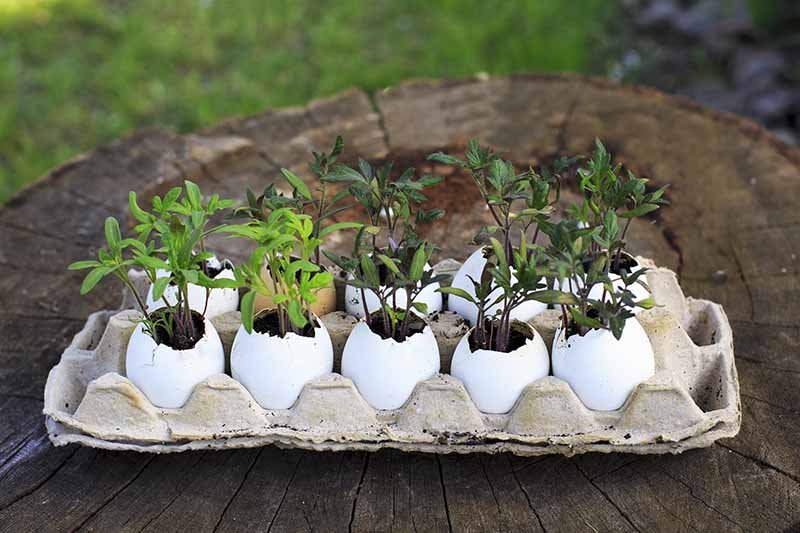
Sharp, crushed eggshells act as a barrier against soft-bodied pests such as slugs and snails. The jagged edges irritate their bodies, discouraging them from crossing into your plant beds.
How to use:
- Dry and crush shells into coarse pieces (not powder).
- Sprinkle in a ring around plants like lettuce, hostas, or strawberries.
- Reapply after heavy rain, as shells lose effectiveness when washed into the soil.
Safety tip: This method works best as a deterrent, not a cure for a severe infestation. Combine with other slug-control strategies for best results.
4. Seed Starters
Eggshell halves make excellent biodegradable seed-starting pots. They hold soil, provide calcium as they decompose, and can be planted directly in the ground without disturbing roots.
How to use:
- Carefully crack eggs near the top, rinse shells, and poke a small drainage hole in the bottom.
- Fill with seed-starting mix and sow seeds.
- Once seedlings are ready, plant the shell directly into the soil.
Safety tip: Crush the shell slightly when transplanting to help roots spread more easily.
5. Houseplant Fertilizer Tea
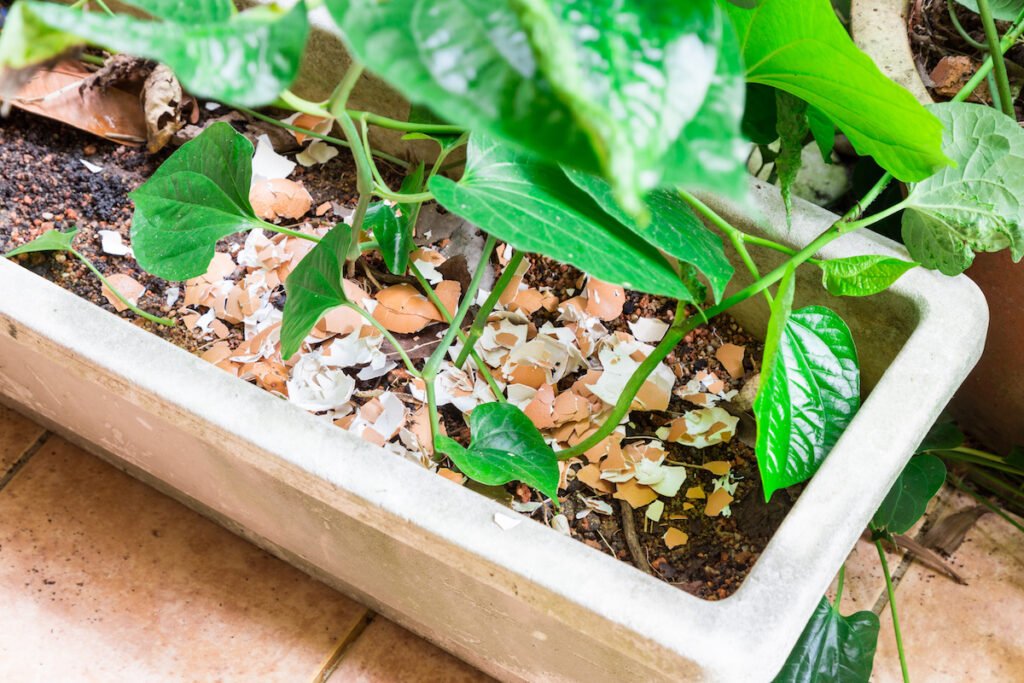
Eggshells can be steeped in water to create a gentle, calcium-rich fertilizer that’s perfect for indoor plants and seedlings.
How to use:
- Boil a dozen clean shells in a gallon of water for 5–10 minutes.
- Let cool, then use the liquid to water plants.
- Store in a sealed container in the fridge for up to a week.
Safety tip: Label and refrigerate your eggshell tea to prevent spoilage and bacterial growth.
6. Soil pH Balancer
If your soil is too acidic, eggshells can help raise the pH gradually. This is especially helpful for plants that prefer neutral to alkaline soil, like beans, spinach, and brassicas.
How to use:
- Grind shells into a fine powder for quicker effect.
- Mix into soil before planting or spread as a top dressing.
- Repeat each season for a gentle pH adjustment.
Safety tip: Eggshells won’t drastically change soil pH overnight. For serious imbalances, combine with soil testing and other amendments.
7. Bird and Chicken Feed Supplement
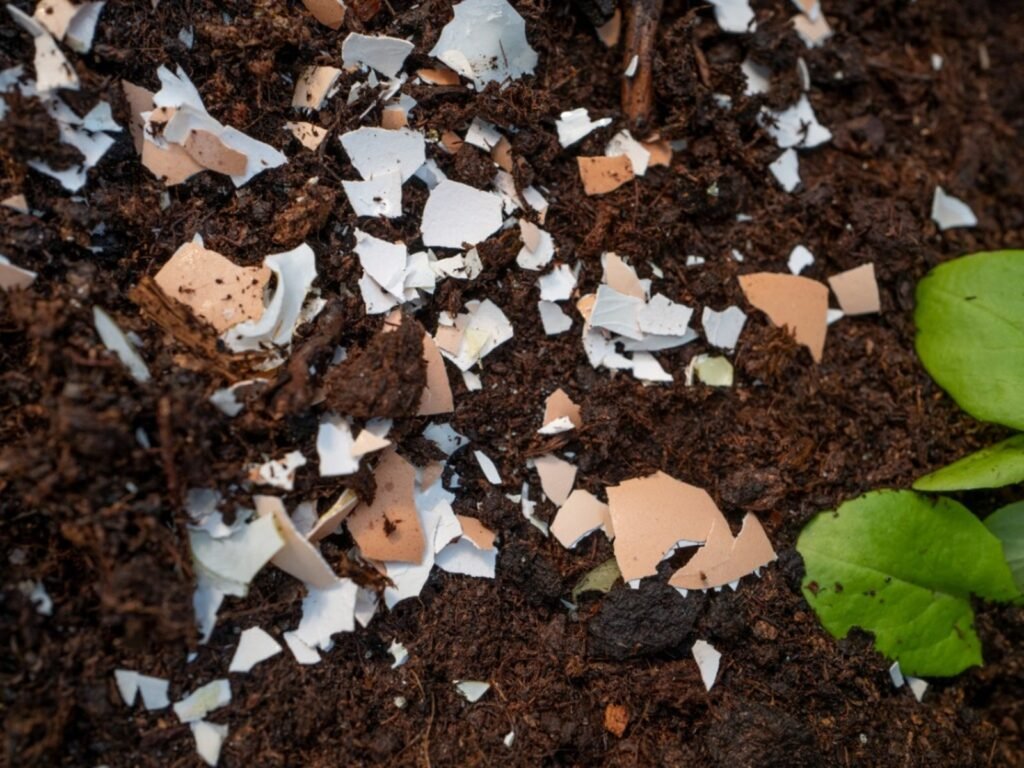
If you keep backyard chickens or encourage wild birds, eggshells can be used as a calcium-rich supplement. Chickens need extra calcium to lay strong-shelled eggs, and many bird species benefit from the boost during nesting season.
How to use:
- Bake clean eggshells at 250°F (120°C) for 10 minutes to kill bacteria.
- Crush into small flakes.
- Mix with chicken feed or scatter for wild birds.
Safety tip: Always bake shells before feeding to prevent salmonella contamination.
8. Mulch Additive for Extra Minerals
Eggshells can be added to mulch blends to slowly release calcium and other nutrients over time. While they don’t break down as fast as compost, they provide long-term enrichment.
How to use:
- Mix crushed shells with organic mulch materials like straw, leaves, or bark.
- Spread around the base of perennials, shrubs, or fruit trees.
- Over time, rain and microbial activity will leach nutrients into the soil.
Safety tip: Don’t rely on eggshell mulch as your only nutrient source—use it as a supplement alongside compost or organic fertilizer.
Common Mistakes to Avoid
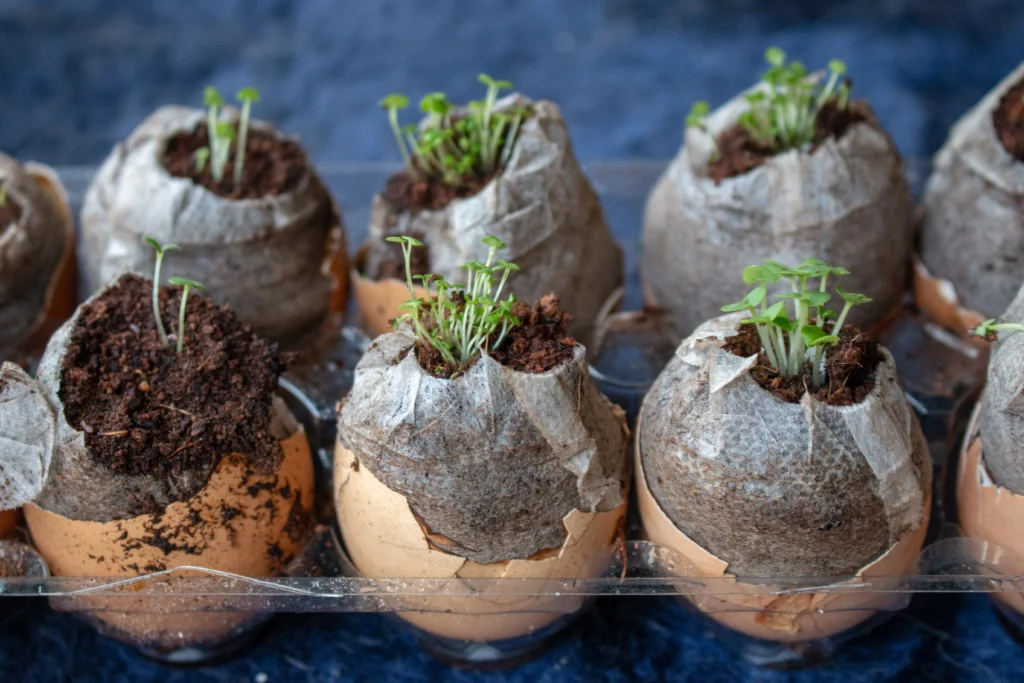
Even though eggshells are simple to use, some missteps can reduce their effectiveness:
- Using raw, unwashed shells: Can attract pests and spread salmonella.
- Leaving shells whole: Takes years to break down—always crush or powder first.
- Expecting instant results: Eggshell nutrients are slow-release, so think long-term soil health rather than quick fixes.
- Overapplying: Too many shells can raise soil calcium excessively and block other nutrient absorption.
Final Thoughts
Eggshells are a simple, sustainable, and cost-free way to improve your garden soil and plant health. Whether you use them to amend soil, start seeds, deter pests, or feed your chickens, these kitchen scraps provide lasting benefits when prepared and applied safely.
By rinsing, drying, and crushing your shells before use, you avoid common risks while turning waste into a valuable gardening resource. Over time, these tiny calcium-rich fragments help create a healthier soil ecosystem and more resilient plants—proof that sometimes the best garden helpers come from your breakfast plate.
So, before you toss those eggshells in the trash, remember: your garden will thank you for saving them.
